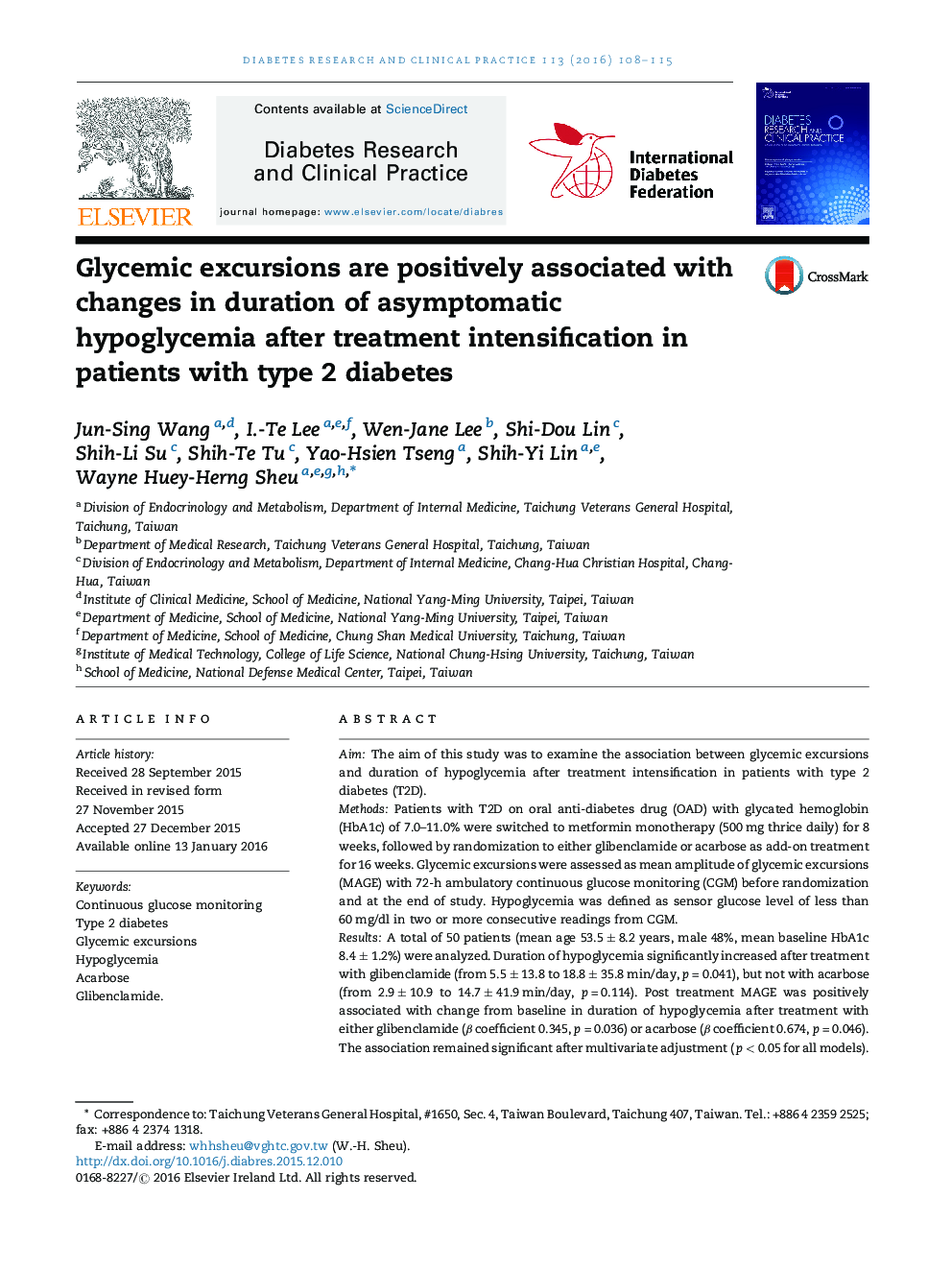| کد مقاله | کد نشریه | سال انتشار | مقاله انگلیسی | نسخه تمام متن |
|---|---|---|---|---|
| 5898832 | 1568802 | 2016 | 8 صفحه PDF | دانلود رایگان |
- Duration of asymptomatic hypoglycemia was monitored with CGM in type 2 diabetes.
- Post treatment MAGE was associated with hypoglycemia duration change from baseline.
- The association was independent of treatment allocation and post treatment HbA1c.
AimThe aim of this study was to examine the association between glycemic excursions and duration of hypoglycemia after treatment intensification in patients with type 2 diabetes (T2D).MethodsPatients with T2D on oral anti-diabetes drug (OAD) with glycated hemoglobin (HbA1c) of 7.0-11.0% were switched to metformin monotherapy (500 mg thrice daily) for 8 weeks, followed by randomization to either glibenclamide or acarbose as add-on treatment for 16 weeks. Glycemic excursions were assessed as mean amplitude of glycemic excursions (MAGE) with 72-h ambulatory continuous glucose monitoring (CGM) before randomization and at the end of study. Hypoglycemia was defined as sensor glucose level of less than 60 mg/dl in two or more consecutive readings from CGM.ResultsA total of 50 patients (mean age 53.5 ± 8.2 years, male 48%, mean baseline HbA1c 8.4 ± 1.2%) were analyzed. Duration of hypoglycemia significantly increased after treatment with glibenclamide (from 5.5 ± 13.8 to 18.8 ± 35.8 min/day, p = 0.041), but not with acarbose (from 2.9 ± 10.9 to 14.7 ± 41.9 min/day, p = 0.114). Post treatment MAGE was positively associated with change from baseline in duration of hypoglycemia after treatment with either glibenclamide (β coefficient 0.345, p = 0.036) or acarbose (β coefficient 0.674, p = 0.046). The association remained significant after multivariate adjustment (p < 0.05 for all models).ConclusionsPost treatment glycemic excursions are associated with changes in duration of hypoglycemia after treatment intensification with OAD in patients with T2D. Glycemic excursions should be an important treatment target for T2D to reduce the risk of hypoglycemia.
Journal: Diabetes Research and Clinical Practice - Volume 113, March 2016, Pages 108-115
